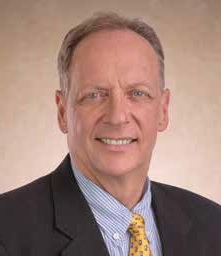Q&A con Stephens Mundy, CEO de la universidad de la red de la salud de Vermont (NY)
por John W. Mitchell, Senior Correspondent | March 02, 2015

Stephens Mundy
From the March 2015 issue of HealthCare Business News magazine
HealthCare Business News interviewed Stephens Mundy, CEO of UVHN to find out the latest news about the facility. Mundy shares his views on how the changes to the health care sector have impacted CVPH in recent years. He also weighs-in on what the spate of mergers and acquisitions means to health care and patient care overall.
HCBN: What do you like about being a hospital CEO?
SM: I like the diversity. For example, yesterday I presented a service star award to one of our environmental service staff members, and then I had an hour-long phone call to discuss our strategy to convert to a hospital system and effectively implement population health management goals. Hospitals are always interesting.
HCBN: What changes in health care delivery have you seen in recent years?
SM: With the focus now on value-based purchasing, it’s more difficult for a hospital to operate as a stand-alone entity. Champlain Valley Physicians Hospital (CVPH) and Elizabethtown Community Hospital (ECH) have joined with the University of Vermont Health Network to create a mini-system in upstate New York. I anticipate that will grow to four New York hospitals in a few years, serving patients under the brand and excellent reputation of the University of Vermont. It’s no longer cost-effective for hospitals to duplicate services, especially services that require expensive investments in technology. The reimbursement is just not going to be there anymore.
HCBN: What advantages does consolidation offer patients?
SM: Take our cardiology services for example. Before we were affiliated with the Vermont system, we were capable competitors, earning high marks for quality and service. Volume, especially in cardiac surgery, was a concern and Vermont was doing about 300 cardiac angioplasty cases on New York patients (from our service area). As part of the University of Vermont Health Network, we’ve been able to shift our cardiac surgical program to Vermont and provide angioplasty and other cardiac interventional procedures here. Patients are getting the right care in the right place, as close to home as possible. And instead of competing over these patients, we’re providing the services as part of a system. We now have better, more sensible options in developing the physician supply we need to serve our region.
HCBN: Do you have any new programs in development?
SM: Yes, as with many rural, smaller markets we don’t have enough primary care doctors. So under the Vermont auspices, we are starting a family medicine residency program that will train four new primary care doctors in a year. So we’ll have a pipeline delivering 12 new family medicine doctors by the third year of the program. This is very exciting and a great service to our community. It will also allow us to continue our population health focus.
HealthCare Business News interviewed Stephens Mundy, CEO of UVHN to find out the latest news about the facility. Mundy shares his views on how the changes to the health care sector have impacted CVPH in recent years. He also weighs-in on what the spate of mergers and acquisitions means to health care and patient care overall.
HCBN: What do you like about being a hospital CEO?
SM: I like the diversity. For example, yesterday I presented a service star award to one of our environmental service staff members, and then I had an hour-long phone call to discuss our strategy to convert to a hospital system and effectively implement population health management goals. Hospitals are always interesting.
HCBN: What changes in health care delivery have you seen in recent years?
SM: With the focus now on value-based purchasing, it’s more difficult for a hospital to operate as a stand-alone entity. Champlain Valley Physicians Hospital (CVPH) and Elizabethtown Community Hospital (ECH) have joined with the University of Vermont Health Network to create a mini-system in upstate New York. I anticipate that will grow to four New York hospitals in a few years, serving patients under the brand and excellent reputation of the University of Vermont. It’s no longer cost-effective for hospitals to duplicate services, especially services that require expensive investments in technology. The reimbursement is just not going to be there anymore.
HCBN: What advantages does consolidation offer patients?
SM: Take our cardiology services for example. Before we were affiliated with the Vermont system, we were capable competitors, earning high marks for quality and service. Volume, especially in cardiac surgery, was a concern and Vermont was doing about 300 cardiac angioplasty cases on New York patients (from our service area). As part of the University of Vermont Health Network, we’ve been able to shift our cardiac surgical program to Vermont and provide angioplasty and other cardiac interventional procedures here. Patients are getting the right care in the right place, as close to home as possible. And instead of competing over these patients, we’re providing the services as part of a system. We now have better, more sensible options in developing the physician supply we need to serve our region.
HCBN: Do you have any new programs in development?
SM: Yes, as with many rural, smaller markets we don’t have enough primary care doctors. So under the Vermont auspices, we are starting a family medicine residency program that will train four new primary care doctors in a year. So we’ll have a pipeline delivering 12 new family medicine doctors by the third year of the program. This is very exciting and a great service to our community. It will also allow us to continue our population health focus.
1(current)
You Must Be Logged In To Post A CommentRegistroRegistrarse es Gratis y Fácil. Disfruta de los beneficios del Mercado de Equipos Médicos Nuevos y Usados líder en el mundo. ¡Regístrate ahora! |
|










